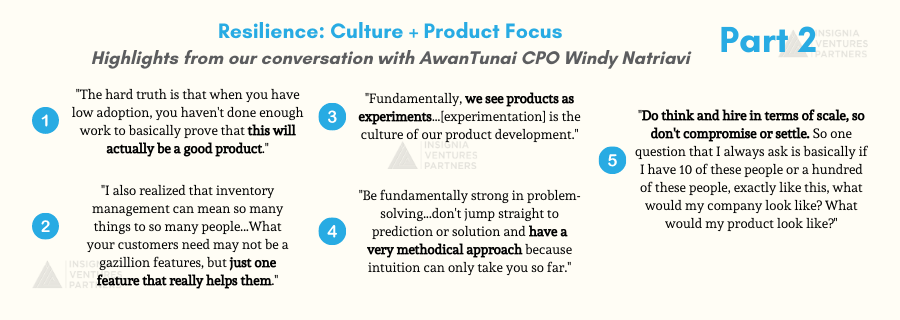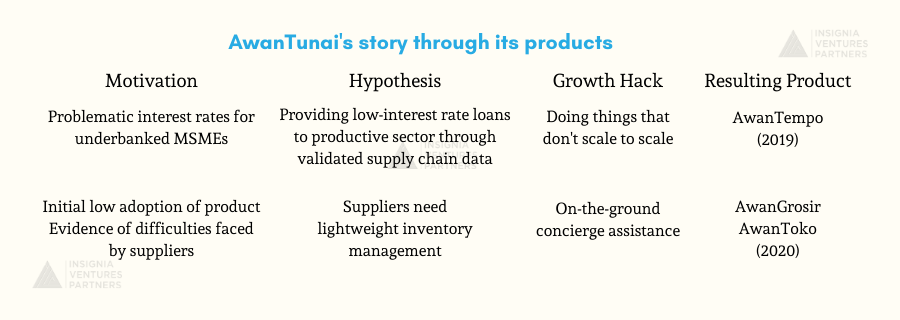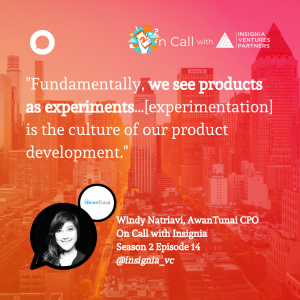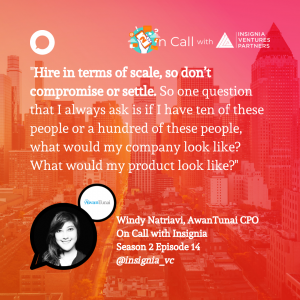2020 has been an unimaginably challenging year for tech startups. Even with the digitalization opportunities opened up by the impact of COVID19, founders navigated uncharted territory when it came to managing remote teams, acquiring and retaining clients, and fundraising in the new normal. From their experiences, many inspiring stories of resilience have emerged, and to close 2020 we tell one such story from our portfolio.

AwanTunai bags first in the ASEAN fintech category of the MAS Fintech Awards 2020
Despite the negative impact of COVID on lending and financing businesses in Indonesia, AwanTunai has been able to grow their loan book 2x, secure an OJK lending license and raise a $20 million debt facility all while keeping their NPLs below 1%.
They also leveraged on the COVID opportunity to digitize more services for SMEs, introducing new products like AwanToko and AwanGrosir. They were also recently awarded first in the ASEAN Fintech category for the MAS Fintech Awards 2020.
And who better to get on-call from AwanTuani than a leader who’s been driving this growth on-the-ground? Windy Natriavi, AwanTunai’s chief product officer and co-founder, shares with us the ingredients for AwanTunai’s resilience.
This is part two of our two-part series on AwanTunai’s story of resilience. The second part covers the second factor of building resilience, according to Windy, which is product focus and experimentation. This call was recorded 26th of November, 2020.
Highlights

Highlights from Part 2 of our conversation with AwanTunai CPO and co-founder Windy Natriavi
Timestamps
01:51 Finding product-market fit with AwanTempo;
04:49 Product discovery process (AwanGrosir + AwanToko);
09:36 The link between company culture and product development;
10:50 Advice for product and growth professionals;
11:34 Advice for founders hiring product talent;
13:27 Rapid-fire round: Top 3 CPO skills, Recommend Books, Activities to De-Stress, Travel destination in Indonesia;
Transcript
Paulo: Yeah. and so you talked about the two factors early on, you know, the first one is culture and the second one was really paying attention to the pain points on the ground of customers.
And I’d like to go now to the second factor paying attention to pain points. And Dino, in his episode mentioned a bit about that. That you guys ran several experiments and tested several propositions. I think like 10 of them, he said, you know, before finding, you know, product-market fit with your first product AwanTempo. So I like to know what that experience was early on from your perspective.
Listen to Dino’s conversation with On Call with Insignia Ventures >>>
Windy: Sure. So definitely it was a humbling experience, how we found the product-market fit for AwanTempo. So at that point in time, I think the company was in a state of slight confusion, given the misalignment between our mission of providing low-interest rates for the productive sector, with the interest rates that we have to deploy for this consumer which at that time you were basically doing. So we’ve been thinking a lot about productive loans, right, but we were afraid that the infrastructure was not there. And so there had been so many questions that we didn’t know, so to deploy another digital product and put our engineering team immediately on that would be very risky.
So our main question at that time was how would the risk pan out because pricing is directly correlated with how much risk we will have to compensate for or account for. So we decided to test the hypothesis that for productive loans, It would be definitely way lower in terms of risk because we would be able to see what they’re using it for.
So I think that was one kind of thinking that we had. So it was not only thinking, “Okay, now I have to move from the consumer. What do I do?” It was more, “Okay. What was the hypothesis that we have, or the root cause why we were not able to achieve this interest rate that we wanted to?”
And it led us to realize it’s not only about consumptive or productive loans, but it’s also related to how we are able to acquire validated data. So we then spent a few months, we started out with four suppliers and we did things that, to be honest, do not scale, but we were very focused on testing this hypothesis.
Because we know that if we are able to say that, yes, this is right, one big major problem, at least, we would be able to solve. And so we did things that don’t scale such as assigning one person to handhold merchants, even offering equity at one point to our suppliers, for them to just use our product and to push this to all of their merchants.
And we just wanted to know one thing, which is, is it true that we are able to lend at a low enough interest rate, but still have amazing NPL that allows us to really not hinder the growth of the economy, but actually fast-forward the growth. That was our mission. And that was our vision.
So then it turns out that within one month then we figured out, you know, we can do that. And now we’re offering 1/10th of what other fintechs are offering while making really good enough margins and keeping our NPLs low. So it was a very humbling experience for me.
So our main question at that time was how would the risk pan out because pricing is directly correlated with how much risk we will have to compensate for or account for. So we decided to test the hypothesis that for productive loans, It would be definitely way lower in terms of risk because we would be able to see what they’re using it for.
Paulo: Right. Yeah. and I think that what you mentioned brings me back to one of the things that you told me when I interviewed you for our product leaders series, you mentioned something about, don’t really run experiment after experiment for solutions without really clarifying what the why is. And I think, you know, that goes back to what you said about having that hypothesis and testing that hypothesis.
Fast forward today, you now have AwanGrosir and AwanToko as well. So what was now the process of developing and rolling out these products?
Windy: So I think it was similar actually. We ran a lot of experiments, and also faced some difficulties as well. So actually when we started, we had very low adoption, and then, you know, I realized that what does it mean when you have low adoption? And the hard truth was that when you have low adoption, you haven’t done enough work to basically prove that this will actually be a good product.
So in a nutshell, you haven’t done good enough product discovery. You know, you can say, “Oh, this PM or that PM, or this designer, or blah, blah, blah.” But at the end of the day, you just have to come back to the fact that you don’t have a good product discovery. So then what I started doing was implementing mandatory customer visits once a week for all of our team members in product teams including myself.
Doesn’t matter whether you’re product support, whether you’re a designer, you have to go down to the ground, because You have to interact with the customers. You have to basically get in their head. We even started being concierges, meaning that we asked the suppliers, “Hey, can we actually do what you do? Can we actually receive customers? Can we go to your store? We input and do a transaction.”
And we even deploy things for free, right. And see how, people will use it, but not only help people will use it, but how fast can we actually use it compared to how fast the suppliers can use it or the suppliers’ current systems basically.
So then this allows us to figure out features such as our lightweight inventory management, which initially no one thought would work. And none of the suppliers actually asked for it. None of the suppliers actually asked for this. And this was really something that I think at that time, people were like, “Are you sure?”
But then eventually, I was quite bothered by the evidence that one of our PMs gave and he was able to run me through the exact process of what our customers would have to go through that it just makes sense for us to build a lightweight inventory management system. And now, when we launched that, we showed it to the suppliers and now we have four suppliers that are in the early stages that are basically saying, “You know what, replace all of my legacy systems. I want this.”
And they did not say that before.” That feeling is phenomenal. And I really then understand, what Henry Ford once said, “If you ask customers what they want at that one point in time, they would have said I want faster horses,” but because you’re actually there, and you’ve been in a state of good product discovery, then you’re basically able to say, you know what, maybe this is not what they need and they would want what they need once they see it. And so I think that was risky, but, there was a methodical process actually, and the process of developing and rolling out, it was humbling and phenomenal.

The hard truth is that when you have low adoption, you haven’t done enough work to basically prove that this will actually be a good product.
Paulo: Right, right. Looking at it from the outset, it seems very left field to all of a sudden get into this inventory management and to an extent, supply chain delivery almost right, given that you’re a financing company initially. But then now that you explain it and going through that process, it actually makes a whole lot of sense, I would say, and it’s really interesting how one product being low adoption actually led to creating another product that became that hook for the customers to actually convert.
Windy: Yes. And I think one of the things that I also realized, Paulo, was that inventory management can mean so many things to so many people. And I think, just saying that I think a lot of people sometimes think, “Oh, you know, Windy why can’t you just get it off the shelf?”
But it’s different. What your customers need may not be like this gazillion of features, but just one feature that really helped them. So in our case, why we were so sure of this lightweight inventory management, we saw how many sales that actually they were losing, or they were not able to confirm.
And how many bodies they had to hire to basically check on their warehouse or inventory, because they did not know just, like an estimation of how much stuff they have. And they did not need the accuracy. They just need the estimation. And so, inventory management is such a daunting, two words for a lot of people, right? But then we managed to actually launch it within just two sprints and we delivered what the suppliers actually need.
I also realized that inventory management can mean so many things to so many people…What your customers need may not be a gazillion features, but just one feature that really helps them. So in our case, why we were so sure of this lightweight inventory management, we saw how many sales that actually they were losing, or they were not able to confirm.
Paulo: Yeah, so I think especially at this stage, it’s pretty exciting what you guys have done so far. And, I mean, so far, it’s four suppliers, but you know, definitely seeing more adoption given how pressing of a need this is, I would say, especially now with a lot more pressure on supply chains and logistics to keep up with e-commerce and all of that.
And another point, that was interesting in your story was that again, the candor and being direct that you mentioned earlier, sort of reflects again in this story, you know, sort of accepting the hard truth about, you know, the low adoption and then actually going out into the field and, being concierges for the customers.

AwanTunai’s story told through its products
So this whole culture of experimentation, being direct, and this drive to continuously digitize and then you just MSMEs. I want to bring those two factors that you mentioned together. How do the culture and product development come together at AwanTunai?
Windy: So I think fundamentally, right, we see products as experiments. We don’t have fixed roadmaps. In fact, the way we decide on features is via a product pitch. So it’s similar to betting. So you will be given dollars, everybody in the leadership management that’s relevant to the problem at hand will be given dollars representing engineering capacity.
And we will then prepare, from the product team, the objective of the pitch, or in this case the product feature that we want to suggest. Then we provide the objective, our hypothesis or root cause on why this is happening, and then we provide the evidence, which comes from the product discovery that we do, as well as the prediction, which is basically the solution, right along with the impact and risk assessments.
Then we simultaneously vote and decide. So if you take a look at this, right. So it’s really like an experiment, and that’s how we see the product. It does not only influence our product development, but it is the culture of our product development.

Fundamentally, we see products as experiments…[experimentation] is the culture of our product development.
Paulo: Yeah. It feels like the people of the product team are also entrepreneurs themselves, coming up with their own products and pitching them to you guys for funding basically.
Yeah, and speaking of empowering the people who are, working with you at what advice do you have for other professionals building a career in product and growth roles in Indonesia, especially women?
Windy: Sure sure thing. So I think the first thing that I would really want to emphasize is to really be fundamentally strong in problem-solving, really see this as a problem that you need to solve. Don’t jump straight to prediction or solution and have a very methodical approach because intuition can only take you so far.
But then having the process that you can replicate over and over again, the reward will be worth it because then you will have this confidence that you will be able to solve and drive products that really change how people behave and change their lives. And you will know that it’s not because of chance or luck.
Be fundamentally strong in problem-solving…don’t jump straight to prediction or solution and have a very methodical approach because intuition can only take you so far.
Paulo: And on the flip side, what advice do you have then for founders who are hiring for these professionals in product and growth roles?
Windy: So given how scarce that product manager is, and even like how even rare a good product manager is always, really think that these are the people that you are bringing into your team. Here are the people that will interact with a lot of your team members and in a way, then it will shape the culture of how your company behaves and what, eventually you will be able to offer your customers.
So even though it’s very rare, but do think and hire in terms of scale, so don’t compromise or settle. So one question that I always ask is basically if I have 10 of these people or a hundred of these people, exactly like this, what would my company look like? What would my product look like?
How would my customers react? So then it makes the tough decisions easy because sometimes you would have a lot of great product managers that are technical in terms of the backgrounds, or they have experiences at so many other companies or some that may be quite relevant and you obviously would just leap.
But then the cost of actually hiring the wrong person is really big. And so I think, always think and hire in terms of scale. I think that’s the very fundamental advice that I would have.

Do think and hire in terms of scale, so don’t compromise or settle. So one question that I always ask is basically if I have 10 of these people or a hundred of these people, exactly like this, what would my company look like? What would my product look like?
Paulo: Right. And I think for both the professionals and the founders, the common thread is really to be thoughtful, as you’ve said, you know, thoughtful with your approach to problem-solving for product professionals and thoughtful for the founders in terms of thinking about the effect of bringing people into the team would have for the, for the product.
Yeah. you know, it’s been quite a ride, listening to all of the stories that you’ve had, the war stories, building the different products for AwanTunai, and going into all these experiments. And I’m sure there’s a lot to learn for product managers in our audience and founders in our audience. but we’re not done just yet. to wrap up our conversation, we always ask our guests to join us for a rapid-fire question round. So this part, no need to go into a full-length story, just short answers and your one-liners.
What are the top 3 skills CPOs should have?
Windy: Problem-solving, genuine curiosity of what technology can bring, and strong stakeholder management.
What is one thing you learned in your experience so far at AwanTunai that you wish you had known earlier?
Windy: Trust your intuition and don’t hang on to things too long.
What is a book that you would recommend for product and growth professionals?
Windy:
Radical Candor by Kim Scott
Zero to One by Peter Thiel
What is your key takeaway from Zero to One?
Windy: Build a technology that changes society, not just a technology-enabled business
What is your go-to activity to de-stress?
Windy: Meditation and watching spiritual gurus on Youtube.
(it’s also great to reconnect with family!)
If you had the chance to travel anywhere in Southeast Asia today, where would you go?
Windy: Raja Ampat, for diving – and I’m going!
Is there anything you’d like to plug / announce on our show?
Windy: AwanTunai is always hiring for people who can become our partners, not our employees. And if you’re a woman hearing this, please note that you matter beyond what you think. Do check out our website at www.womenworks.io and hit me up!
About our guest

Windy Natriavi is the Chief Product Officer and a co-founder of AwanTunai. before AwanTunai, she was part of Go-Jek’s early management team co-founding and becoming VP of GoLife, and then VP of Growth, the team behind Go-Jek’s first promo engine, referral engine, and cross-sell voucher systems.
Previously, she was an analyst at McKinsey and she graduated from the prestigious University of Indonesia with a degree in finance. And as you mentioned earlier, aside from leading product and growth from one to nine these days, she is also co-founder and CEO of, WomenWorks, a women-first connection marketplace in Southeast Asia.